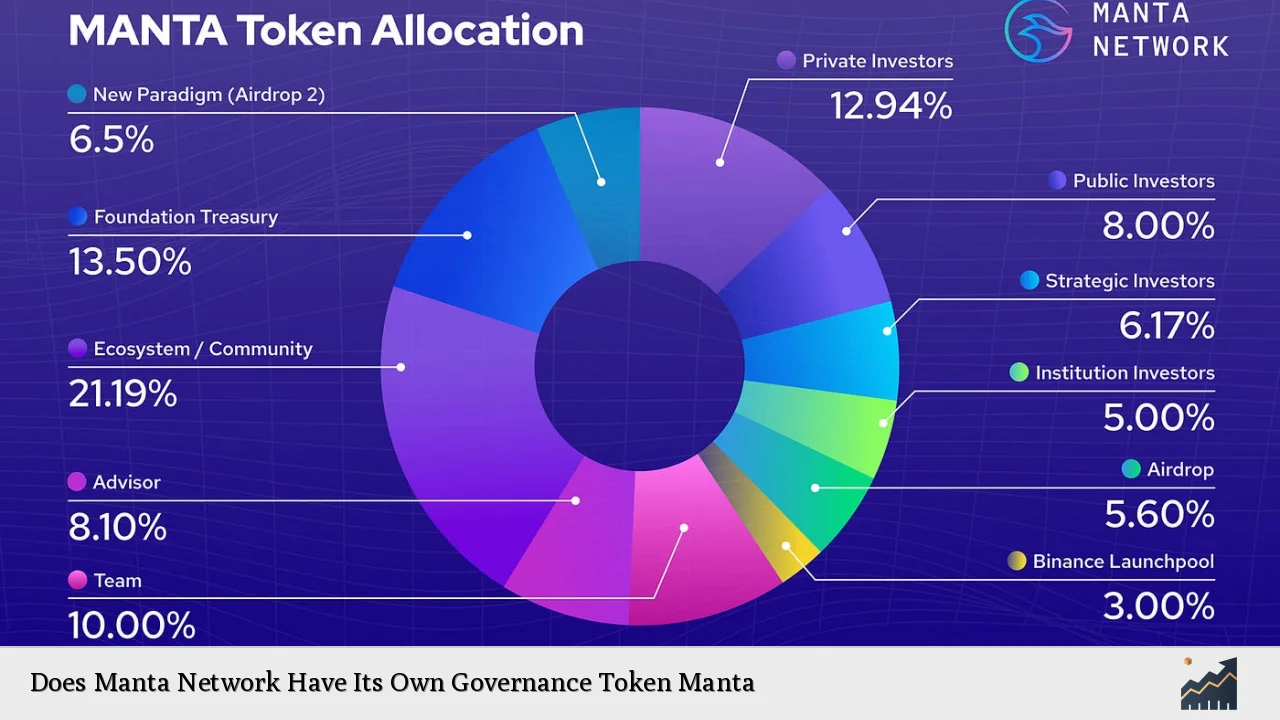Manta Network is a pioneering blockchain platform that focuses on privacy and scalability, utilizing advanced cryptographic techniques such as zero-knowledge proofs. Central to its ecosystem is the MANTA token, which serves multiple essential functions, including governance, transaction facilitation, and staking. This article delves into the role of the MANTA token within the Manta Network, exploring its significance in governance, market trends, implementation strategies, risk considerations, regulatory aspects, and future outlook.
| Key Concept | Description/Impact |
|---|---|
| MANTA Token Utility | The MANTA token is used for governance, transaction fees, staking rewards, and as collateral within the Manta ecosystem. |
| Governance Model | Manta Network employs a unique governance model where MANTA token holders can propose and vote on network changes, ensuring decentralized decision-making. |
| Market Capitalization | As of December 2024, Manta Network has a market capitalization of approximately $444.6 million with a circulating supply of around 384.5 million tokens. |
| Tokenomics | The total supply of MANTA is capped at 1 billion tokens with a yearly minting rate of 2%, designed to incentivize long-term holding and network participation. |
| Staking Mechanism | Staking MANTA tokens contributes to network security and allows holders to earn rewards while participating in governance. |
Market Analysis and Trends
The cryptocurrency market has seen significant fluctuations in recent years, with privacy-focused projects gaining traction due to increasing concerns over data security. Manta Network stands out by offering scalable solutions that cater to decentralized applications (dApps) while ensuring user privacy through its zero-knowledge proof technology.
Current Market Statistics
- Market Capitalization: Approximately $444.6 million.
- Circulating Supply: About 384.5 million MANTA tokens.
- Price Trend: The price of MANTA has experienced volatility but is projected to reach around €2.71 by the end of 2024.
Growth Potential
Analysts predict that as privacy becomes a more pressing issue in the digital landscape, projects like Manta Network are well-positioned for growth. The integration of advanced privacy features could attract more developers and users to its platform.
Implementation Strategies
Manta Network’s success hinges on several key implementation strategies:
- Decentralized Governance: Empowering token holders through a structured governance model that allows for active participation in decision-making processes.
- Robust Staking Mechanism: Encouraging users to stake their tokens not only secures the network but also aligns their interests with the platform’s long-term success.
- Partnerships and Collaborations: Engaging with industry leaders for custody solutions and risk management enhances the platform’s credibility and usability.
Risk Considerations
Investing in cryptocurrencies like MANTA carries inherent risks:
- Market Volatility: The crypto market is known for its price swings; thus, investments can lead to substantial gains or losses.
- Regulatory Risks: As governments worldwide develop regulations around cryptocurrencies, compliance may pose challenges for platforms like Manta Network.
- Technological Risks: Any vulnerabilities in the underlying technology could impact user trust and adoption.
Regulatory Aspects
Manta Network operates within a complex regulatory environment. It is crucial for investors to stay informed about changing regulations that could affect cryptocurrency trading and usage. Compliance with regulations from bodies such as the SEC will be vital for maintaining legitimacy and operational integrity.
Future Outlook
The future of Manta Network appears promising due to its innovative approach to privacy and scalability. Key factors influencing its trajectory include:
- Increased Adoption: As more developers create dApps that prioritize user privacy, demand for platforms like Manta Network will likely grow.
- Technological Advancements: Continuous improvements in zero-knowledge proof technology will enhance transaction speeds and reduce costs.
- Community Engagement: Active participation from token holders in governance decisions will foster a robust community that supports sustainable growth.
Frequently Asked Questions About Does Manta Network Have Its Own Governance Token Manta
- What is the role of the MANTA token?
The MANTA token serves multiple purposes including governance rights, transaction fees payment, staking rewards, and acting as collateral within the network. - How does governance work in Manta Network?
MANTA token holders can propose changes and vote on key decisions affecting the network’s development and operations. - What are the benefits of staking MANTA tokens?
Staking provides rewards for participants while enhancing network security and stability. - What are the risks associated with investing in MANTA?
Investors face market volatility, regulatory uncertainties, and potential technological vulnerabilities. - How does Manta Network ensure user privacy?
Manta Network utilizes zero-knowledge proofs to allow transactions without revealing user data. - What is the total supply of MANTA tokens?
The total supply is capped at 1 billion tokens with an annual minting rate of 2%. - How can I participate in governance?
You can participate by holding MANTA tokens which grant you voting rights on network proposals. - What is the current market cap of Manta Network?
The current market cap is approximately $444.6 million as of December 2024.
In conclusion, the MANTA token is not only vital for transaction processing within the Manta Network but also serves as a powerful tool for governance that empowers users to shape the future of this innovative blockchain platform. With its focus on privacy and scalability, coupled with a robust governance model, Manta Network is poised for significant growth in an increasingly privacy-conscious digital economy.

